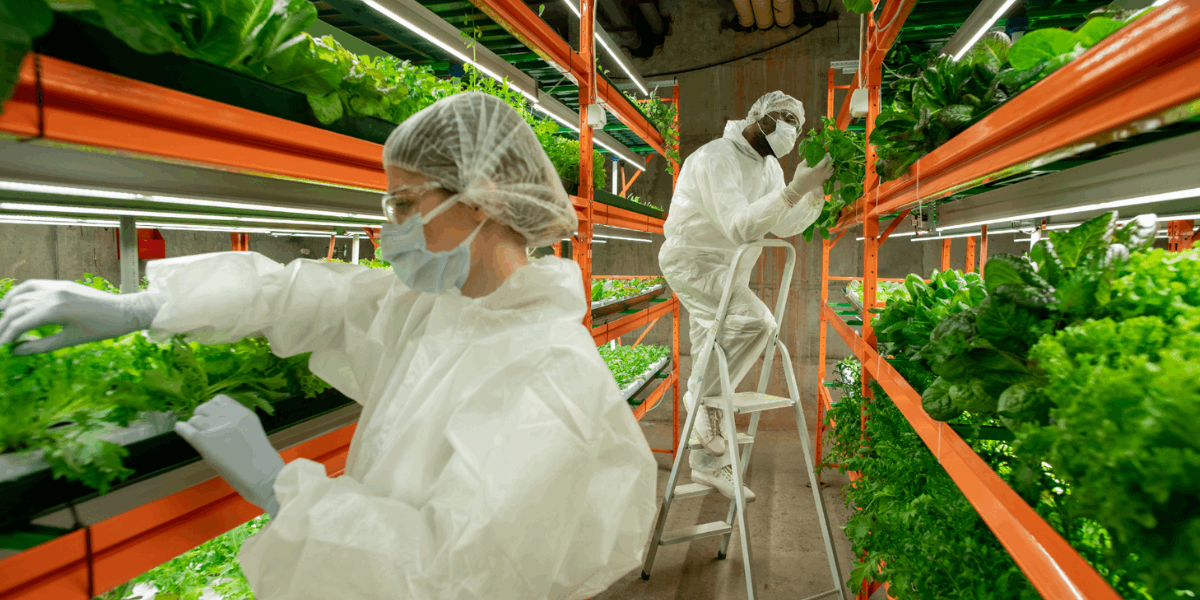We’re excited to delve into a rising trend that’s making waves in South Africa’s agricultural scene: Vertical and indoor farming. At the heart of urban agriculture innovation, these technologies are reshaping the food and beverage industry, and as always we at Craft Collective are excited to see how this emerging trend is impacting the diaspora of the South African food and beverage landscape.
Understanding Vertical and Indoor Farming
Knowledge and curiosity often originate from some of the most unlikely of places. My interest in this trend was tickled by my younger brother’s recent school science project on this unique and exciting topic. Vertical and indoor farming are innovative approaches to food production that aim to maximize output while minimizing resource usage. Vertical farming involves growing crops in vertically stacked layers, often in controlled environments, while indoor farming refers broadly to various methods of growing crops inside buildings, containers, or other enclosed spaces.
The South African Landscape
South Africa, with its dynamic mix of developed urban centers and agricultural richness, is embracing these technologies on a commercial scale for several key reasons:
- Urbanization and Space Efficiency: Rapid and widespread urbanization in cities like Johannesburg and Cape Town is driving the need for locally sourced, fresh produce. Vertical and indoor farming, due to their high yield per square foot, offer viable solutions to this problem.
- Climate Change Resilience: Given the increasing unpredictability of weather patterns and recurring droughts, indoor and vertical farming offer methods to grow crops in a controlled environment, independent of external climate conditions.
- Sustainability: With increasing consciousness about sustainable food systems, these farming methods use significantly less water and land compared to traditional farming, appealing to eco-conscious consumers and businesses alike.
Impacts on the South African Food and Beverage Industry
Here’s how vertical and indoor farming are set to influence our industry:
Local, Fresh Produce All Year Round: Indoor and vertical farming can provide fresh, locally-grown produce throughout the year, regardless of seasonality. This benefits both consumers who crave freshness and businesses seeking consistent supply chains.
Novel Crops and Flavors: These technologies enable the growth of crops that may not traditionally thrive in South Africa’s climate, allowing for greater diversity and novel flavors in our local cuisine.
Supply Chain Simplification: By bringing production closer to urban consumers and businesses, these technologies can streamline supply chains, reducing food miles and associated carbon emissions.
As a prime example, innovative startups in Johannesburg, like Kobus Vertical Farming, Future Farms of South Africa, Smart Farming Technologies CC, and Urbanization Cultivation International, have started using shipping containers for indoor farming, leveraging hydroponic systems to grow fresh greens right in the heart of the city. These ventures have been well-received, offering fresh, locally-grown produce to city dwellers and restaurants, reinforcing the potential of these technologies in urban settings.
The rise of vertical and indoor farming in South Africa represents a step towards a more sustainable, resilient food system. At Craft Collective, we’re committed to helping businesses understand and leverage these exciting developments. We believe the future of farming is not just on the horizon, but also upwards and indoors.
Stay tuned for more insights from us as we continue to explore the fascinating intersection of food, technology, and culture in South Africa.


